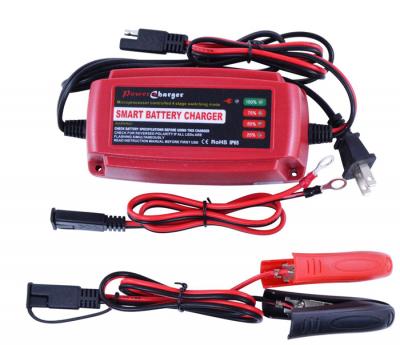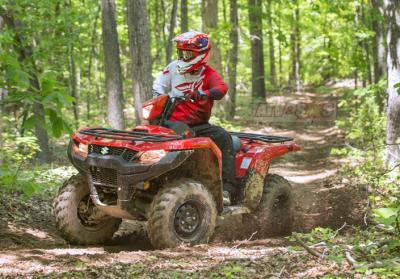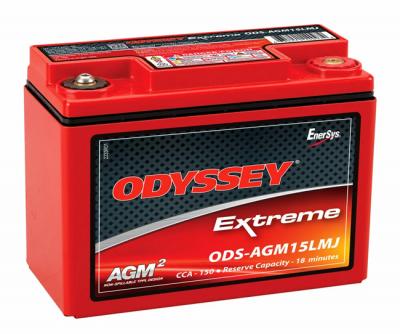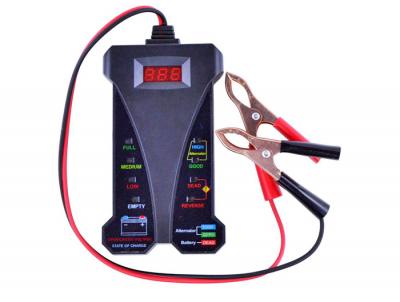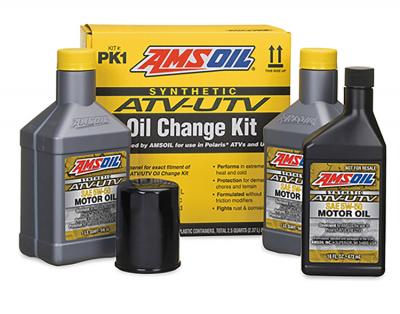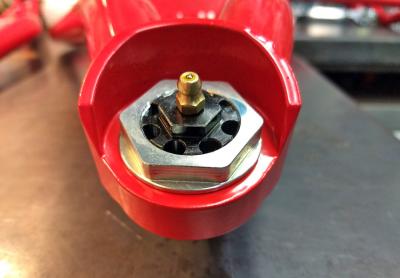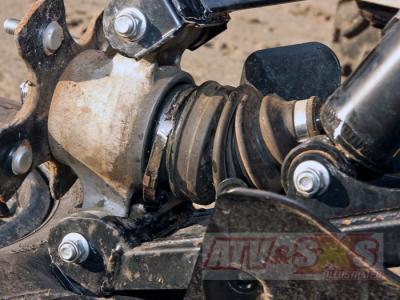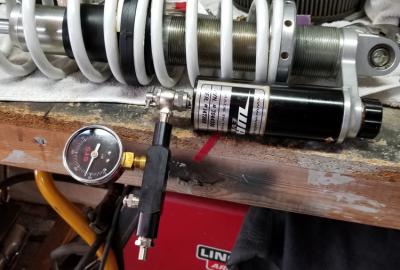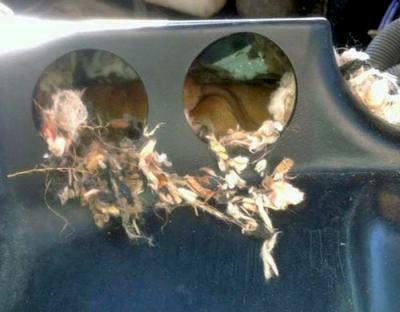Spring is here and it’s time to get your racer ready to ride! No doubt you were careful to clean it up and fully winterize it before tucking it away last fall, but there are a few simple things you need to check before heading to the track and trails. Here’s the checklist:
1: BATTERY RECHARGE
Batteries aren’t what they used to be thanks to much lower lead limits. Having a battery tender connected over the winter helps, but cold weather, sulfation buildup on battery plates, and a slowdown of the chemical reaction within the battery all contribute to a low or no charge condition. A recovery charger will sometimes restore the ability of the battery’s plates to accept and release energy, but the Grim Reaper of power cells is not far away.
In testing a battery’s voltage, there are three important levels. With the engine off, the no-load voltage level should be around 12V or higher. The second voltage level is cranking voltage, which will drop below 12 V as the engine starts. The third reading is the charging level, which tests alternator function to assure the battery is getting charged when the engine is running. This test usually registers around 13.8V to 14V. If in any of these three tests the numbers are substantially below normal ranges you are facing either battery or alternator problems.
There are three main choices for battery replacement: Lead-Acid like your dead stock battery, Lithium Ion, or AGM (Absorbed Glass Mat). The primary advantage to the Li-Ion battery is reduced weight, but they’re a little more sensitive to temperature variations and they perform better with a charging system designed for them. AGM batteries have become a preferred battery source for the following reasons:
- Higher voltage output, faster recharge rates, and slower discharge rate
- Longer lifespans with very good weather resistance and less susceptibility to vibration damage
- Spill-proof and can be mounted in a variety of positions
For the money, longevity, and durability it’s hard to beat a good AGM battery.
2: TIRE CHECK
Sometimes it seems our tires leak for no apparent reason. This is especially true when parked for the winter. Putting your ATV on a stand seems to help, but by spring we can practically guarantee they’ll all need air. Check your tires for any obvious problems like cracks or a leaking valve stem, bring them up to your preferred pressure, and head for the trails. One small trick we use is to put a little oil on the valve stem before inflating. This helps lubricate the valve stem plunger and seal.
3: OIL and AIR FILTER CHANGE
There is no more important task for maintaining your machine than changing the oil and keeping your air filter clean. If you didn’t get these tasks done before putting your ATV away, by all means get to it before you hit the track or trail this spring. We usually use an oil that provides good protection across a wide temperature range such as 10w40, and we’ve had great luck with Mobil-1 or AMSOIL, but other brands are very good too. The most important thing about oil is to change it frequently. The high-performance four-stroke engines of today run hot and tend to break oil down quickly. We tend to use OEM oil filters, but again, other brands are acceptable and will provide good protection.
AIR FILTER changes are every bit as important as oil changes, and for our race machines we prefer a dual stage foam filter that can be washed and recoated. Yes, it takes a little more effort, but it works. We’ve found nothing stops dirt as well. Some machines use a replaceable cartridge style filter and those work also, but NEVER blow one out with an air gun held to the surface. That’s like a mini-shotgun blast to the filter element and will effectively blow the tiny particles right through. While many will claim they’re been doing it all their life, this isn’t your Briggs and Stratton mower, and it’s a LOT more expensive if you screw it up! Oil changes and air filters are ridiculously cheap compared to engine rebuilds, and a LOT less frustrating.
4: FUEL PRIMER
Since the feds mandated a percentage of fuel must be from corn – ETHANOL – the only people really happy about it are Iowa corn farmers and possibly a few engine rebuild shops. Go figure! The ethanol mandated in fuel simply doesn’t last much more than a month, and worse, ethanol is hygroscopic (it likes water more than it likes gasoline), and the bond between ethanol and gasoline breaks down in short order. This phenomenon is known as phase separation. It then sinks to the bottom of the tank and when enough of this gathers, the water finds a path your piston, boils a now unprotected spot on it, and burns through.
The best way to protect against the problems with Ethanol is to use recreational fuel or racing fuel which is usually 100% gasoline. Yes, it costs more, but as a bonus it also contains about 20% more BTUs, (energy) so you actually get better mileage while your engine runs better. If you have a tank full of ethanol already in your machine from last season, we suggest draining it and using it in an engine less sensitive such as a lawn mower. Store fresh fuel in a sealed can (preferably metal), keep it off the floor to help avoid condensation, and if you’re tempted to use dry gas, use it very sparingly, and NEVER use methanol which can damage materials used in your fuel system! If you have to use dry gas, ALWAYS USE ISOPROPYL types.
5: CHASSIS LUBE
Grease tends to stiffen over time. If your machine comes with grease zerks give them a shot of a high quality or marine grade lithium grease. If you do not have grease zerks now is a good time to pull swingarm pivot bolts, axles, and suspension pivots. Clean them out and apply a fresh coating of grease for the upcoming season. If you ride in water this is incredibly important. A good dielectric grease on electrical connections can prevent water from shorting your electrical system as well.
Machines with CV axles have a major concern with the rubber boots covering the axle joints. Be sure to replace any torn boots now before it lets in grit and water which will destroy the joint.
6: BRAKE INSPECTION
Going fast is sometimes about stopping fast too! Your brakes had better be in excellent working condition. Give your pads a look and roll your machine across the floor or jack stand while listening for any grinding or squeaking. These are usually a sign of worn or dragging pads, or a piston that doesn’t retract enough. Take off the offending caliper, pull the pads, remove any crud and reinstall pads that are still in good shape, or install new pads.
The second common problem with brakes is often a spongy feel at the lever or pedal. This usually means you have air in the line. You’ll need to bleed the lines, and this is easiest with a buddy helping work the lever while you watch the bleeder valve. Be sure to top off the brake master cylinders with fresh fluid after any brake service as well.
7: SHOCK RECHARGE
The nitrogen in your shock bodies tends to sneak past the seals over time while the oil breaks down, making your suspension too soft. Take your shocks off and have them serviced before the season. Fresh oil and a recharge of the gas will have your machine riding and handling much better.
8: RESIDENT RODENT EVICTION
It’s very common to have mice make a home on or even inside your machine over the winter. There’s no area they won’t happily take up residence. We’ve seen them find their way into the airbox, chew through filters, and store nuts and even corn in the air intake tract. Under the seat is another favorite spot, or worse, inside the seat foam. Machines with a CVT clutch also provide a great home inside the CVT air intake tract or inside the CVT cover. Should you find signs of a mouse problem, pay attention to your wiring harness. Some wire coatings are corn based and rodents will happily chew off the insulation, leaving the wires exposed and sure to cause a problem for you. Before starting your machine make sure you don’t have any damage from hitchhikers.
9: RATTLE and ROLL
You can learn a lot about your machine by giving it a good shake! Grab each wheel and try to rock the machine with it. It’s common to find worn or loose parts this way, and it’s much better to find them in the garage rather than on the trail. It’s a great idea to check each bolt to make sure they’re all tight as well.
TRAIL and TRACK READY
Right before every riding season is wrenching season. That time is now. Giving your machine a thorough mechanical checkup now and following our few basic maintenance tips will definitely help keep you on the track or trail during prime riding season. And that’s where we all want to be!


